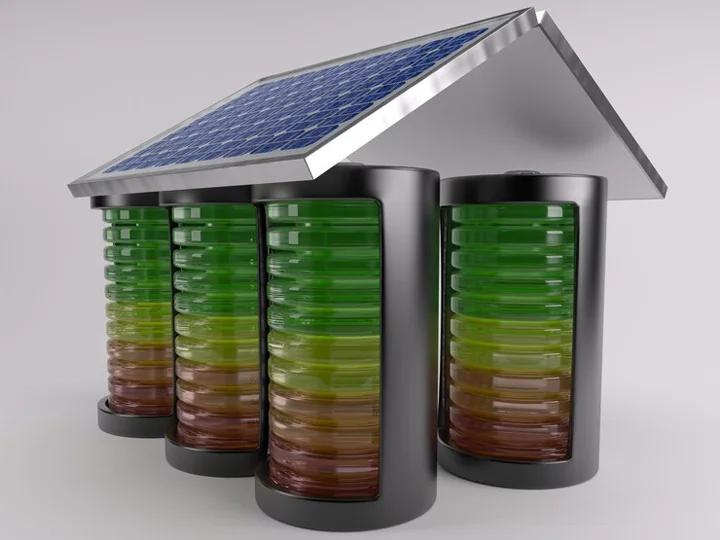Plant Tracking Software: A Comprehensive Guide.
With the emergence of technologies like IoT, AI, and enhanced cloud computing, the future of plant tracking software is promising. Whether you are in the renewable energy sector or manufacturing, embracing plant tracking software like Retgen is an investment in the optimization and future-proofing of your operations.
I. Introduction to Plant Tracking Software
Plant tracking software is an indispensable tool in the modern industrial landscape. It refers to specialized software that monitors, manages, and optimizes various aspects of plant operations. Whether it be renewable energy plants like solar or wind, or manufacturing units, tracking is pivotal to performance and efficiency.
What is Plant Tracking Software?
Plant tracking software is a technology solution that enables the monitoring and management of plant operations and assets. It allows for the real-time tracking of various parameters such as production levels, equipment status, and environmental conditions. In the renewable energy sector, such as solar power plants, tracking software like Retgen developed by Rast Teknoloji is a game changer. Retgen is a cloud-based system that is not only scalable but also supports real-time monitoring and management of various renewable energy plants.
Importance of Plant Tracking in Various Industries
In industries like renewable energy, where fluctuations in external conditions like sunlight and wind can affect productivity, plant tracking is vital. It helps in maximizing output, ensuring safety, and maintaining equipment. For example, in solar power plants, monitoring the sunlight and adjusting the panels accordingly can make a significant difference in the energy produced. Similarly, in manufacturing, tracking can help in reducing downtime, managing inventory, and optimizing processes.
Benefits of Using Plant Tracking Software
Using plant tracking software, like Retgen, offers numerous benefits including improved efficiency, reduced costs, and enhanced decision-making. The ability to remotely monitor and manage renewable energy plants, as Retgen allows, means that timely interventions can be made to prevent potential issues. Furthermore, with cloud-based solutions, scalability is inherent, accommodating the growth and expansion of the plant operations.
II. Key Features of Plant Tracking Software
Real-time Monitoring and Tracking
One of the primary features of plant tracking software is real-time monitoring. This allows for the immediate assessment of various factors and parameters. Retgen, for example, excels in real-time monitoring of renewable energy plants, continuously analyzing data, radiation levels, and weather conditions.
Inventory Management and Asset Tracking
Effective plant tracking software must be able to manage and track assets and inventory. This includes keeping track of the status and availability of equipment and spare parts.
Data Analytics and Reporting Capabilities
Data analytics and reporting are crucial for informed decision-making. Retgen, for instance, has strong reporting capabilities, allowing for the creation of detailed reports based on data collected from renewable energy plants. These reports can be generated daily, monthly, or annually.
Integration with Other Systems and Devices
Integration is key for the effectiveness of plant tracking software. It must be capable of integrating with a variety of systems and devices. Retgen, for instance, doesn’t require additional hardware for integration and supports different brands and models of inverters.
Mobile Accessibility and Remote Monitoring
Mobile accessibility allows for the remote monitoring and management of plant operations. With Retgen’s workforce management system, technicians can receive alarms and step-by-step action definitions through mobile applications.
III. Choosing the Right Plant Tracking Software
- Understanding Your Requirements: Before selecting plant tracking software, it is essential to assess your specific tracking needs. Understand the scope and scale of your operations and consider future scalability and growth.
- Evaluating Software Options: Research available options like Retgen and compare features, functionalities, and pricing. It’s also important to read user reviews and seek recommendations from industry experts.
- Making the Final Decision: Conduct product demos and trials. Evaluate customer support and training options. Retgen, being a product of Rast Teknoloji, offers the added benefit of providing additional hardware like weather stations through its own designs, lowering costs. Considering the reputation and track record of the software provider is also vital.
In conclusion, choosing the right plant tracking software, like Retgen for renewable energy plants, can significantly optimize operations, reduce costs, and improve decision-making processes.
IV. Implementing Plant Tracking Software
A. Pre-Implementation Preparation
Before installing plant tracking software, it’s important to have a clear project plan and timeline. Knowing what you aim to achieve with the software is crucial. You also need to gather necessary data for system setup and ensure that your staff and stakeholders are trained on the software usage. In the case of renewable energy plants using Retgen, it’s essential to understand the specific parameters and data points you want to monitor.
B. Software Setup and Configuration
This step involves installing the plant tracking software. For cloud-based solutions like Retgen, this generally involves setting up an account and configuring the software according to your needs. Settings and customization options should be configured at this stage. In Retgen’s case, being a cloud-based solution, it doesn’t require additional hardware for integration, which makes this step easier. Also, it’s important to ensure that the software is integrated with existing systems and databases.
C. Data Migration and Initial Setup
For plants that were previously using another system, data migration is a critical step. This involves transferring existing plant data to the new system. Asset profiles, categories, and user roles should be set up during this phase. For example, in Retgen, you might set up profiles for different types of renewable energy assets such as solar panels, wind turbines, and hydroelectric generators.
D. Testing and Validation
Once the plant tracking software is set up, it is crucial to conduct thorough testing. This ensures that the software is working as expected and that the data is accurate. Any issues or bugs that are identified during this testing phase should be addressed before the software is fully deployed. For Retgen users, this could include verifying the accuracy of real-time monitoring data and ensuring that the system can effectively analyze weather conditions.
E. Employee Training and Onboarding
After the software has been tested and validated, it’s important to provide comprehensive training to staff members. This training should educate users on software features and workflows. Retgen’s user-friendly interface is beneficial in this regard. Additionally, it’s essential to offer ongoing support and assistance as employees adapt to the new system.
Implementing plant tracking software like Retgen requires a well-thought-out plan, from pre-implementation preparation to employee training. Successfully implementing the software ensures optimized operations, improved efficiency, and a higher return on investment, especially in renewable energy plants.
V. Future Trends in Plant Tracking Software
The technological landscape is ever-evolving, and plant tracking software is no exception. Here are some trends that are likely to shape the future of plant tracking software:
Introduction of IoT and Sensor-Based Technologies
The Internet of Things (IoT) and sensor-based technologies are revolutionizing plant tracking. With sensors collecting real-time data and IoT facilitating communication between devices, tracking software can become more accurate and responsive. For instance, Retgen’s ability to integrate with different devices can be enhanced through IoT, making data collection and analysis even more effective.
Integration with Artificial Intelligence and Machine Learning
Artificial Intelligence (AI) and Machine Learning (ML) can greatly enhance the capabilities of plant tracking software. These technologies can be used to predict equipment failures, optimize operations, and make data-driven decisions. For instance, Retgen could use AI algorithms to predict when solar panels are likely to require maintenance based on historical data.
Enhanced Mobile and Cloud-Based Capabilities
As cloud computing continues to evolve, we can expect to see even more powerful cloud-based plant tracking solutions like Retgen. These solutions will likely offer more storage, faster processing, and better scalability. Moreover, mobile capabilities are likely to improve, with more robust mobile applications that provide all the functionality of the desktop versions.
VI. Conclusion Plant Tracking Software
Plant tracking software has become an essential tool for monitoring and managing plant operations across various industries. With key features like real-time monitoring, inventory management, and data analytics, it plays a critical role in improving efficiency and making informed decisions. Retgen, as an example, stands as a powerful cloud-based solution designed to meet the needs of renewable energy plants.
Choosing the right plant tracking software involves understanding your requirements, evaluating various options, and making an informed decision. Once chosen, proper implementation and employee training are crucial.


